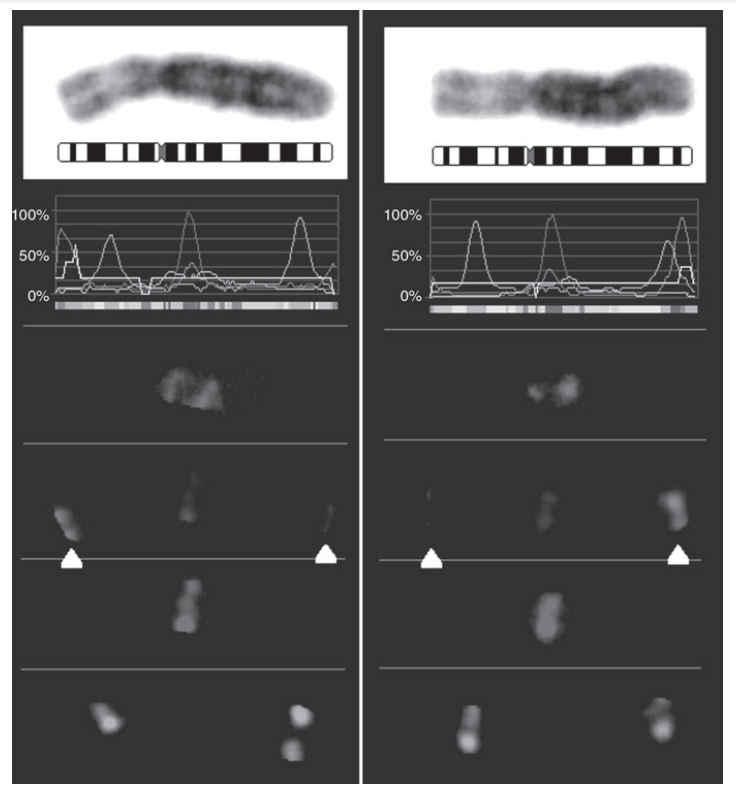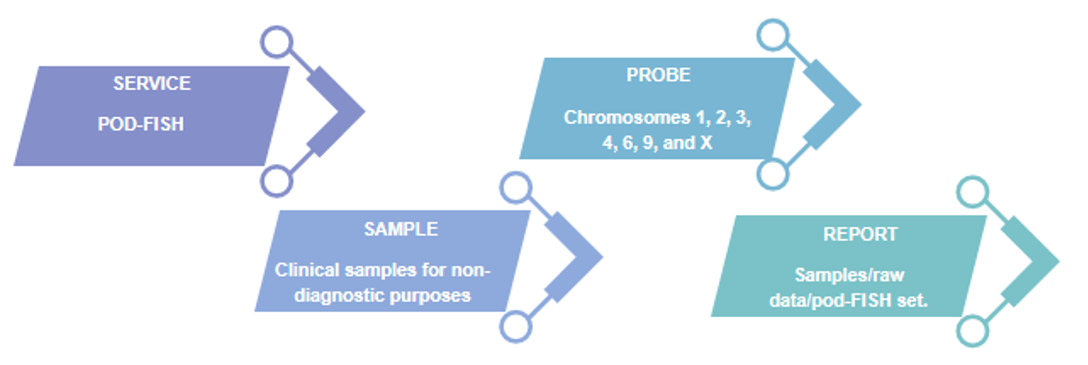Parental Origin Determination
Parental Origin Determination and POD-FISH
There are some genetic variations in DNA sequence between any two human individuals, these differences include single nucleotide polymorphism (SNP), small insertion deletion polymorphism (INDEL) and non-coding polymorphism. Copy number variation (CNV) became popular after it was first reported in the human genome at the beginning of this century. Afterward, attention was paid to large-scale copy number variation (LCV) or copy number polymorphism (CNP), an indicator of change that can be used to analyze cytogenetics. In general, CNVs have a separate pattern on each chromosome, and they can be used like microsatellite markers as markers to distinguish single homologous chromosomes. Chromosomal inheritance can be tracked when studying the relatedness of samples through microsatellite analysis. Using CNVs, the same can be done in triple analysis of chromosome preparations (biparental offspring). These variants, discovered by DNA microarray technology (aCGH), include hundreds of previously undetected structural variants in the human genome, such as deletions, gains, and inversions. LCV/CNP This human genome structural variation includes variation in the kilo- to megabase-pair range and is located in euchromatic regions throughout the genome. Identification of homologous human chromosomes based on DNA sequence polymorphisms can be achieved by what is known as parental determination FISH - POD-FISH.
 Fig 1. High frequency POD-FISH set for chromosome 6. (Weise A et al., 2010)
Fig 1. High frequency POD-FISH set for chromosome 6. (Weise A et al., 2010)
General Flow of POD-FISH
Pod-FISH was the first cytogenetic method to distinguish homologous chromosomes or sequences based on submicroscopic DNA polymorphisms. Later, the method underwent some tweaks that greatly improved its performance on single cells as well as improved resolution. Over the past period, this technique has been used for the analysis of clinical samples for non-diagnostic purposes, with potential areas of use mainly in research related to prenatal diagnosis. Examples include the exclusion of maternal contamination in prenatal diagnostic assays, the detection of chromosomal homozygosity, the determination of the origin of abnormal chromosomes, the process of determining cell mixtures or mosaicism. In some classical protocols, analysis of POD-FISH is performed on a specific set of chromosome arms created on chromosomes 1, 2, 3, 4, 6, 9, and X, and can be scaled up or down according to the needs of the analysis. Of course, tracking individual chromosomes from generation to generation by pod-FISH can also be used to demonstrate paternity. In theory, this technique could also be used for ancestry analysis in animal medical research.
 Fig 2. FISH service for parental origin determination.
Fig 2. FISH service for parental origin determination.
Creative Bioarray is committed to exploring the potential of FISH analysis technology and providing customers with more technical services. If you are interested in our service, please contact us for cooperation. We look forward to cooperating with you in the near future.
References
- Weise A, Gross M, Hinreiner S, et al. POD-FISH: a new technique for parental origin determination based on copy number variation polymorphism[M]//Fluorescence in situ Hybridization (FISH). Humana Press, Totowa, NJ, 2010: 291-298.
- Liehr T. Molecular Cytogenetics in the Era of Chromosomics and Cytogenomic Approaches[J]. Frontiers in Genetics, 2021: 1944.
All products and services on this website are only suitable for non-medical purposes.


 Fig 1. High frequency POD-FISH set for chromosome 6. (Weise A et al., 2010)
Fig 1. High frequency POD-FISH set for chromosome 6. (Weise A et al., 2010) Fig 2. FISH service for parental origin determination.
Fig 2. FISH service for parental origin determination.


